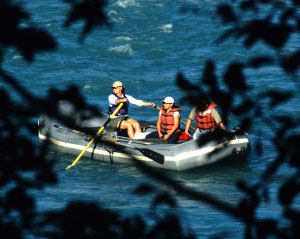Kenai Peninsula Jobs and City Information
Kenai is the largest city on Alaska’s Kenai Peninsula, and also one of its most exciting. The South Central Alaskan town on the peninsula’s western side is often called Alaska’s Playground for its emphasis on fun in the great outdoors.
Kenai sits at the mouth of the Kenai River, a waterway that’s home to halibut, grayling, rainbow trout and four species of salmon, including the famous King salmon. Amateur anglers can cast a line from the shore or a charter boat, but if you get a taste for it you may decide to stay longer and take on a seasonal position.
Accepting a role in Kenai’s fishing industry is a great way to combine work and play. But you needn’t be a fisherman to appreciate Kenai River. You can discover it with a peaceful kayak ride, or walk along its edge looking for Kenai’s resident caribou, bears, and water birds.
After a day spent in the great outdoors, the heart of Kenai’s city is the place to be. Its pubs and cafes have a warm, friendly atmosphere, so they’re a great place to spend time after a hard day. There’s the same buzz on Saturday mornings when tourists and locals come together at the Kenai Visitor and Cultural Center for the weekly markets. Stall keepers lay out an array of fresh produce with handmade arts and crafts and other quirky keepsakes.
The Alaskan town has certainly come a long way since it was occupied by the Kachemak people, perhaps as early as 1000 B.C. They were overthrown by the Dena’ina people, who took control of the area at around 1000 A.D. This Native American tribe called the land ken, or kena, a word which roughly translated to “flat meadow, open area with few trees.” This tribe later came to be known as the Kenaitzes, a name adopted after it was coined by Russian fur traders. The uneasy relationship between the Russian settlers and the Dena’ina led to the bloody battle of Kenai in 1797.
Despite this uneasy start, Kenai began to grow into its own in the early 1900s.

Shipping companies and canning firms helped to strengthen Kenai’s fishing industry. With the construction of Kenai Airport in 1937, the city began to realize its potential as a tourist destination.
Kenai’s diverse selection of accommodation options looks to cater for all kinds of travelers, from young singles looking for adventure to families seeing the country, and from entrepreneurs on short business trips to seasonal workers spending a few months in town. Kenai’s hotels and motels are conveniently located in the heart of town, with all the modern conveniences of a big city. Visitors can enjoy the wilder side of Kenai by staying at one of the township’s camping grounds or RV parks. Some sites offer back to basics spots to pitch your tent, while others have the electricity you need to feel you’re not really roughing it. While these parks are further from the city, they’re often just a short walk from popular fishing holes and hiking trails.
These natural experiences can be a much bigger draw card for the untamed traveler than the city lights.
Travelers expect cold weather in all Alaskan towns, but Kenai’s temperatures are actually quite mild. Summer days regularly enjoy temperatures in the mid 60s, while in winter it typically falls to the high 20s during the day. However the locals joke that the only thing predictable about Kenai’s weather is its unpredictability! Dressing in layers ensures you’ll stay comfortable, even during a cold snap or heat wave.
Kenai is just a hop, skip, and a jump from Alaska’s largest city, Anchorage. Day trippers can fly there in just 20 minutes, or enjoy a more leisurely three-hour drive. Grant and ERA Aviation both fly small prop-driven planes daily between Kenai Airport and Anchorage International. If you’ve got the time though, the drive is the most scenic and economical choice. Keep your eyes out for the mountain vistas and moose, bears, and Dall sheep that line the Seward Highway to help the drive fly by.


 Teach English in Asia
Teach English in Asia  Cruise Ship Jobs
Cruise Ship Jobs  Alaska Fishing Industry Jobs
Alaska Fishing Industry Jobs  Sharing Economy / Gig Economy
Sharing Economy / Gig Economy